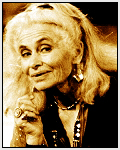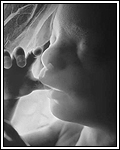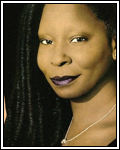Description
Most witches understand that there is power in numbers, and most seek liked minded individuals while searching for greater magical or universal truths within their lifespan. Usually in groups of three, but no greater than thirteen, there are groups of witches that share a common belief system and view of the world. These groups are known as Traditions. Generally all witches of a particular coven will belong to the same tradition. How a witch acts and behaves will be dependent on which tradition they belong to, and according to the world in which they live.

The wandering gypsies of the world have often been believed to be consorting with dark powers, evil magics or witchcraft. While this is untrue for nearly all gypsies there is the gypsy witch, also known as Chovihani. The wandering lifestyle of the Chovihani expose them to many forms of magic, belief and worship and it is not uncommon for them to consort with light and dark powers.
It is believed by some that witches of the Chovihani tradition can trace their magical practices all the way back to the magi of ancient Egypt. There is no outside confirmation of this, and the Chovihanies themselves are less than forthcoming with the information.
Gypsies tend to be aloof, almost xenophobic, and the witches of their tribes are more so. A Chovihani witch is always given great respect by the other members of the tribe and normally feared by those outside of it. She may not necessarily be the leader of the tribe, but she will be among its most powerful individuals. Typically a tribe may have one high level witch and two or three lesser witches as novices.
The high-level witch will almost certainly be very old, while the novices may be anywhere from youth to late adulthood. Many times the old witch may adopt an orphaned child and raise her as her own and as a witch. Because of this it has become a saying in many countries that Gypsies or witches steal small children.
Humans fill the ranks of this tradition almost to the exclusivity of all other races.
- Joining this Tradition
- The only way to join the Chovihani tradition is to be born into it. The witch must be a Chovihani or have a parent, particularly a mother, who was. Also, the vast majority of these witches tend to be female. This comes from the basic belief that only females have the mind necessary to understand and practice magic.
-
- Leaving this Tradition
- If the only way into this tradition is to be born into it, often the only way out is death. Though another way out is to simply stop being a Chovihani. When a Chovihani witch no longer practices magic, she begins to lose her powers. Occult powers are lost first, then spells. The witch would have to actually forsake magic and go without magic for at least thirty days to have this occur, brief periods of rest do not count.
 Eclectic Eclectic witches are either a new Tradition or not a Tradition at all. They take elements from various Traditions, classes and even other religions to form their own path. The members of this Tradition are often looked down upon by other Traditions as being amateurs, pretenders or not even being witches. They have even been accused of simply being kids playing at witchcraft. The Eclectics react to these accusations with the same amount of indifference that often pushed them away from their area’s mainstream religion and towards one another.
Eclectics tend to be Solitaries, but this is not always so. In fact, it is generally dangerous to assume anything about this Tradition. They can be like or unlike nearly every other type of witch, but yet retain the one thing that makes them the most honest of all the witch Traditions: they follow their own path to their Craft.
Eclectic covens tend to have a hodge-podge of ideas, myths and ceremonies; they tend to resemble a group of Solitaries that have agreed or compromised on some practices, though it is immediately obvious there is more to the coven than that. A full coven of Eclectics can be as few as three or four, or as many as twenty witches.
Generally there is no recognized leader and all have a say in duties. Nearly all Eclectic witches are human. Nearly all Eclectics (80-90%) are female, though why this is has not been explained, and the Eclectics themselves are not giving up any of their secrets (if they even know). In general, and usually on a one-to-one basis, the Eclectic witch gets along with other types of witches.
- Joining this Tradition
- To become an Eclectic witch, one merely needs to start practicing and make claims to be an “Eclectic witch”. There are no formal ceremonies, no initiations into family secrets. Usually a witch knows she is an eclectic witch when she hears the Call. Often they may have been practicing as a witch before that.
-
- Leaving this Tradition
- Of all the witch Traditions, leaving the Eclectic is the easiest. One simply has to stop considering herself an Eclectic witch. Often times an Eclectic witch will be accepted in another coven with a more formal Tradition. The Eclectic can alter her own beliefs to fit this new coven as she wishes.
In other ways, this Tradition is also the hardest to leave. When one is known to be a former Eclectic witch and attempts to join a more mainstream Tradition (or even another religion), their former status may continue to haunt them. This penalty can persist for up to a year.
The witches of the Family Traditions are among the most diverse of the witch traditions; but the thing that unites them all is a strong sense of tradition and family. The members of Family Tradition all learn their witchcraft the same way, from an older family member, usually a parent or grandparent (who also learned it the same way). Old witch families can track their ancestors as having been witches for dozens of generations. What each Family Tradition does with their witchcraft differs from family to family. Humans fill the ranks of this tradition.
 Magic is in the Blood. Family witches believe that magic is in their blood, mind and spirit. Nearly all family witches are natural born witches, and their magic proves to be the most powerful among witch traditions. Magic is provided by the Craft and spiritual ancestors, but shaped by the blood, mind and spirit of the witch. However, not every family member has the potential to be a witch. Children are often observed for years for signs of magical potential. Often the Call is heard not only by the prospective witch, but by the teacher as well. Magic is in the Blood. Family witches believe that magic is in their blood, mind and spirit. Nearly all family witches are natural born witches, and their magic proves to be the most powerful among witch traditions. Magic is provided by the Craft and spiritual ancestors, but shaped by the blood, mind and spirit of the witch. However, not every family member has the potential to be a witch. Children are often observed for years for signs of magical potential. Often the Call is heard not only by the prospective witch, but by the teacher as well.
Family witches often have some sort of identifying mark, like a birthmark or an odd shaped mole that all members can recognize. This is known as a “Witch’s Mark” and is used as a test to determine if one is a potential witch. The downside to this, of course, is that many witch hunters have also identified this mark.
In a family of witches it would be hard to imagine someone standing out as special, but often someone extraordinary is born. In addition to the Witch’s Mark, these witches have something else: strikingly different hair color (like a red head in a family full of brunettes), two differently colored eyes, or being the seventh son of a seventh son. These individuals are referred to as Charmed, and they are almost always chosen to become a witch. In some cases, they are believed to be a reincarnated family member who was also a very powerful witch. These special witches are said to have strange gifts and much is expected from them.
- Joining this Tradition
- Generally the only way to join the Family Tradition is to be born into a family of witches. Even marrying into this family is no guarantee that one could become a witch. If the family is powerful then the prospective mates are usually screened years ahead of time and chosen because they have something to offer the family. Serious prejudice and scorn is often laid upon the family witch that chooses to marry outside of her family dictates. For the Family Traditionalist the old saying “Blood is thicker than water” is the law.
- Leaving this Tradition
- If the only way into this tradition is to be born into it, often the only way out is death. Not that all families will kill those witches that leave (but some do), but often it is the witch herself that will find herself drawn back into the family.
The Voodoo witches (also known as Voudounista) are probably among the most mistrusted and misunderstood of all the Traditions. These witches, however, are usually not evil. Their area of specialty is that of enchantments and the creation of items dealing with enchantments, both good and bad.
Voodoo witches are feared because they work in secret using strange, unknown rituals, and they often catch the blame if anything bad happens (such as a flood or a bad crop season). It is rare that a Voodoo witch would be responsible for such acts of nature, but there have been times when a Voodoo witch was banished away from a village, and managed to cause some real trouble but this behavior is looked down upon by Voodoo covens as it only justifies people’s fear of Voodoo.
 There is no style of dress directly related to the Voodoo witch. Some Voodoo witches choose to dress very plainly, often trying to hide the fact that they are Voodoo. Other Voodoo witches cease caring about what the average person thinks of them. In either case, the Voodoo witch will have many different ceremonial clothes for the performance of various rituals. Typical ritual garb includes a simple linen robe or dress tied with a purple sash. There is no style of dress directly related to the Voodoo witch. Some Voodoo witches choose to dress very plainly, often trying to hide the fact that they are Voodoo. Other Voodoo witches cease caring about what the average person thinks of them. In either case, the Voodoo witch will have many different ceremonial clothes for the performance of various rituals. Typical ritual garb includes a simple linen robe or dress tied with a purple sash.
Voodoo witches use magical focuses to cast their spells; these focuses are known as fetishes. Every spell or type of spell has a specific fetish. The Voodoo witch cannot cast any spells without the proper fetish. These typically include a poppet (doll of the victim), an animal part (such as a claw or feather) and blood (typically animal, but sometimes human).
The Voodoo witch covens seldom meet more than once a year. However, they also perform more rituals than the average witch. It’s customary for the Voodoo witch to have an extensive ritual to perform at each full and new moon. Large numbers of the participants in these rituals are not witches themselves, but mundane people, sometimes referred to as “Hounsi”. They may share the same beliefs, but are not members of a Voodoo coven.
These ceremonies are loud musical explosions of dance, fire and free form religious expression. It is not uncommon for some of the participants to become overwhelmed by the Spirits that are communed with. Participants can be found speaking in tongues, and occasionally having diseases spontaneously cured - which is the draw of many of the mundane participants.
- Joining this Tradition
- The requirements of joining the Voodoo Tradition tend to vary coven to coven. Usually, an extensive ritual is performed to initiate the ones who hear the call. After the ritual, the witch is bestowed the title of Houngan (for males) or Mambo (for females).
- Leaving this Tradition
- Unlike some other traditions, to leave this tradition, the witch must only desire to leave the tradition. Sometimes, their persecution has pushed the Voodoo witches’ frustrations, and they have simply left. Ex-Voudounista are rarely sought out by current Voodoo witches, though they are viewed with some contempt. A witch who ceases practicing Voodoo loses their spells and powers.
|